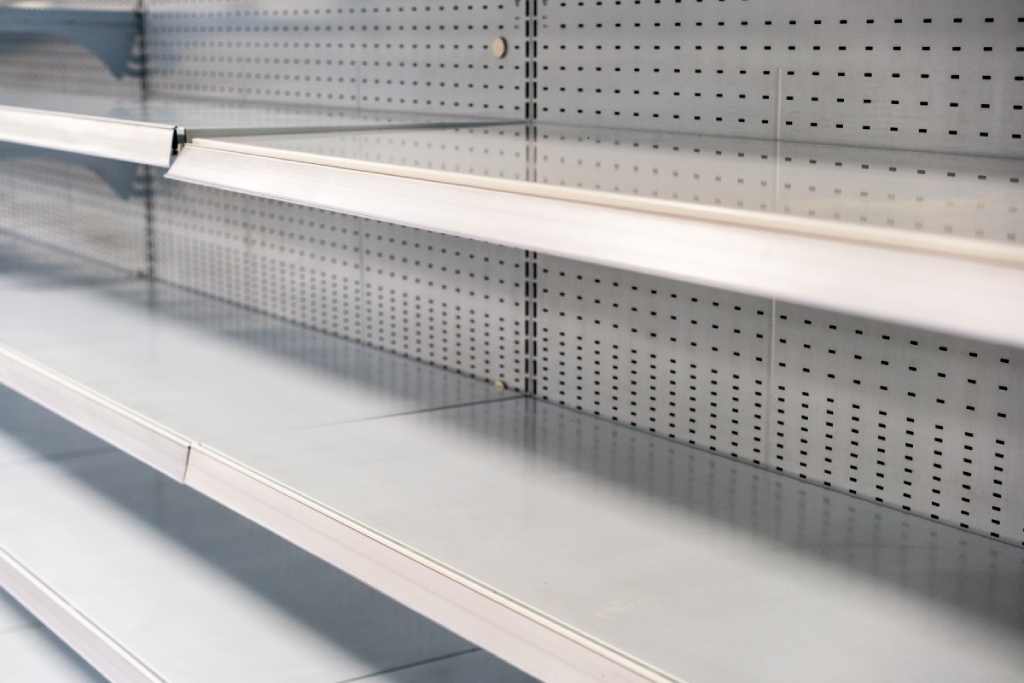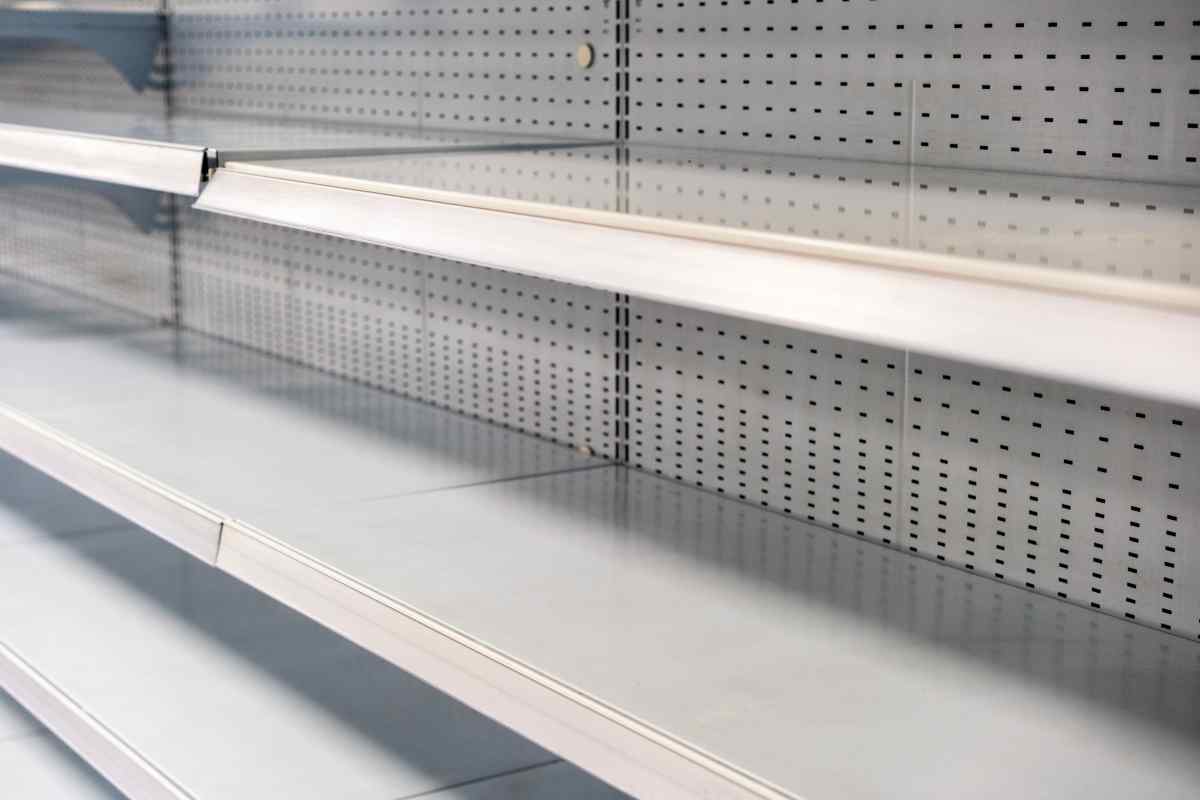
A customer may forgive a single stockout.
Perhaps they’ll even come back after a second one if your product is compelling enough.
But according to industry data, 70% of shoppers will completely cut you off and go to another brand after three stockout experiences.
That’s why it’s important for eCommerce brands to identify the underlying cause of stockouts and take action to prevent them from occurring.
In this post, we’ll go over:
- What causes stockouts
- The most common customer responses to stockouts
- How to prevent stockouts and keep customers happy
Let’s get started.
What is a stockout?
A stockout is when a retailer or eCommerce business runs out of an item in its inventory. This can happen due to a variety of reasons, such as high demand, limited supply, or inefficient processes.
When customers come to purchase a product and it’s not available, they experience frustration. This can damage your brand reputation and cause customers to look elsewhere in the future.
Before we talk about how to prevent stockouts, let’s look at some of the primary causes.
What causes stockouts?
Researchers classify stockout causes into two categories:
- In-house
- Out-of-house
In-house causes are internal process issues that result in stockouts, while out-of-house causes are things upstream from your warehouse – things potentially outside of your control.
In-house causes of stockouts
1: Poor organizational practices
Probably the biggest in-house cause of stockouts is poor organizational practices. When processes are inefficient, it’s hard to keep track of inventory levels, which can lead to stockouts.
2: Over-ordering or under-ordering
If you order too much inventory and it doesn’t sell quickly enough, then that stock will take up space and cost money for no reason. On the other hand, if you don’t order enough stock, then you could face stockouts when demand increases unexpectedly.
3: Poor forecasting
The better your forecasts are, the more accurate your orders will be and the less likely it is that you’ll experience a stockout. If your forecasts are consistently wrong, then you may be ordering too much or too little stock.
4: Improper receiving processes
One of the most important disciplines in your warehouse workflow is receiving product from suppliers, putting it in the correct place, and logging it in your inventory management system.
Doing this by hand or with static methods is possible but highly inefficient and error prone.
We recommend implementing a barcode system in tandem with inventory management software to make this as smooth a process as possible.
5: Poorly timed stock replenishment
If you’re not properly managing a buffer via safety stock, you may miss your window to reorder stock in time and end up with a stockout.
You don’t want to order too early, as you’ll be overstocked, or too late and have a shortage.
That’s why SkuVault has built-in reorder point alerts, automating the process of reminding you to reorder product.
Out-of-house causes
1: Wrong stock from suppliers
To err is human, and suppliers are humans, too. Sometimes they may send incorrect stock or the wrong quantities.
This can result in shortages if your fulfillment processes are not set up to detect and rectify errors immediately.
2: Seasonal demand spikes
Seasonal demand is a fact of life in retail, especially eCommerce. Effectively managing seasonal spikes requires forecasting and proper inventory management.
3: Unexpected supply chain delays
When you order stock from suppliers, there’s always a chance that something could go wrong along the supply chain and cause delays.
The more steps involved in your supply chain, the higher the likelihood of a breakdown.
We all witnessed the impact of COVID-19 on supply chains. It was one of the most significant and unexpected commercial disruptions in history, and the global economy is still recovering in many ways.
Four customer responses to stockouts
According to research by T.W. Gruen (2003), there are four common customer responses to stock-outs.
Though this research was initially conducted on in-person retail, the behaviors are equally relevant in eCommerce.
They are the following:
- Buy the item at another store – The customer goes to a competitor for the same item.
- Delay the purchase – The customer purchases the item later but at the same store.
- Substitute the product – The customer purchases another variant or brand of a similar product.
- Lost sale – The customer simply leaves the store without purchasing anything.
According to the same research, the most common customer behavior is the least ideal: buying the item at another store.
However, the second most common behavior is to purchase a substitute product. This still isn’t ideal (because you’re disrupting the customer’s expectations), but it’s the best scenario out of the bunch.
An example would be a customer who intends to buy a laptop but finds that it’s out of stock.
In this case, they may opt for another laptop with similar specifications instead, which means you still get the sale even though you don’t have their desired item in stock.
At any rate, stockouts are almost never a good thing, especially when they’re due to a lack of planning or organization.
Let’s look at some other ways stockouts impact your business.
How stockouts affect your eCommerce business
Reduced customer satisfaction
When a customer visits your website, they have certain expectations. If their desired item is out of stock, it’s likely the customer will not be pleased with their experience.
This can result in lower satisfaction ratings, negative reviews, and even loss of customers altogether.
Lost sales and profit
As we saw from the customer responses to stockouts, missing out on a customer’s desired purchase due to lack of inventory will lead to missed sales and lost profit.
You can prevent this through strategic replenishment and an accurate forecast.
Lower customer loyalty
A consistently good shopping experience is necessary to secure customer loyalty.
Stockouts can disrupt this process and cause customers to go elsewhere for their desired items.
Crippled brand image
Running out of stock makes your store look unreliable and unprofessional to visitors.
This is especially true if the stockout was due to an unexpected spike in demand, which makes you appear unprepared.
A single negative experience can have a lasting effect on a customer’s perception of your brand and send them to a competitor for their purchases.
Increased costs
Any time you miss out on sales due to stockouts, your business incurs a cost.
These costs can be in the form of lost revenue, customer service expenses, and replenishment fees (among many other things). All these costs add up and should be taken into account during times of peak demand.
Lost opportunities
Finally, stockouts can mean lost opportunities.
If a customer is looking for your product, but you don’t have it in stock, they may continue their search elsewhere and never come back to your store.
This means that any potential sales from that customer are lost forever – along with any chance of building long-term relationships with them.
By understanding the effects of stockouts, you can take proactive measures to ensure that your business is always well-stocked and ready to meet customer demand.
Are stockouts ever a good thing?
In some cases, stockouts (or the risk of stockouts) can actually be beneficial.
But only when they’re controlled and intentional.
For example, if you’re selling a hot new product that’s in high demand and constantly running out of stock, this could actually result in increased sales due to the hype surrounding the item.
We’ve seen this time and time again whenever Nintendo releases a new video game console.
This is a marketing tactic called scarcity, and it’s a great way to encourage buyers to purchase something before it’s gone.
SkuVault has a built-in quantity buffer feature that allows you to balance inventory levels between particular channels (such as your website, Amazon, Etsy, and eBay).
These buffers override the actual quantities of the items that you have on hand when you communicate with a marketplace.
That means customers may see things like “only 12 in stock, order now!” or similar messages on your eCommerce storefronts.
Again, only leverage this strategy if you’ve got a solid inventory management system like SkuVault under the hood.
Otherwise, you run the risk of experiencing all the negatives of stockouts without any of the positives.
How you can reduce stockouts
Stockouts, or at least the risk of them, can sometimes be beneficial.
But let’s be honest: most times, stockouts are accidental.
And since the data shows that the number one stockout behavior of customers is to bounce to a competitor, shoring up these issues should be a high priority for eCommerce businesses.
Here are some tangible ways to eliminate stockouts in your business.
1: Use inventory management software to monitor and balance your stock levels
SkuVault works in the background to ensure your eCommerce storefront integrations are running smoothly. With quantity syncs, products listed across your marketplaces are updated in real time.
Quantity syncs save your business time and money by reducing possible oversells and stockouts from incorrect quantity listings. Your listings will always be accurate and on time to keep your customers satisfied across the board.
2: Understand customer demand patterns
Gaining visibility into customer demand patterns is key when it comes to preventing stockouts.
Understanding these patterns enables you to adjust your inventory levels accordingly and ensure that you always have enough supply to meet customer demand.
This is often best done through inventory forecasting. That way you’re not just going off of gut feelings.
3: Create reorder points for each of your SKUs
Reorder points allow you to anticipate when your inventory levels are running low and need to be replenished.
In SkuVault, reorder points can be set for each SKU so that the system will alert you when it’s time to restock. This helps to ensure that your stock levels remain consistent and accurate at all times.
We also highly recommend maintaining a pre-calculated supply of safety stock.
4: Try to simplify your supply chain
You can have the best inventory management system, an organized receiving process, and safety stocks dialed in, but if you don’t have a reliable supplier, you’ll still be in bad shape.
As mentioned before, the more pieces in your supply chain, the higher the likelihood of something going wrong and interrupting your flow of product.
For some businesses, a multi-step supply chain is necessary and non-negotiable. But for others, it may be possible to simplify your supply chain to mitigate those errors.
For example, you could try utilizing drop-shippers and consolidating suppliers to streamline the process.
Or, you could shop around to find suppliers that have the best lead times. That way, your stock can come in on time and as expected.
No matter what you do, taking steps to streamline your supply chain will help reduce stockouts and save you a lot of headaches in the long run.
5: Don’t forget about your back-end processes
Your inventory management system does a lot of the heavy lifting when it comes to managing and monitoring stock levels.
But don’t forget that there are still some steps you need to take on the back end to ensure accuracy.
For example, make sure all of your data is entered correctly into the system. This includes product descriptions, lead times, and cost of goods sold information.
The more accurate your data is, the better job your software can do in managing your stock levels and alerting you when it’s time to reorder.
Taking these steps will help ensure that your stock levels are always accurate and up to date – which means fewer stockouts for you.
Final thoughts
Staying on top of your inventory management is key when it comes to preventing stockouts in your eCommerce business.
By following the tips outlined above, you can rest assured that your customers will always have access to the products they need when they need them.
Using inventory management software like SkuVault can help make all of these processes run even smoother and keep your stock levels accurate and up-to-date.
To learn more about how SkuVault can help you automate and streamline your inventory management, check out our features page or request a live demo via the link on this page.
Thanks for reading!

